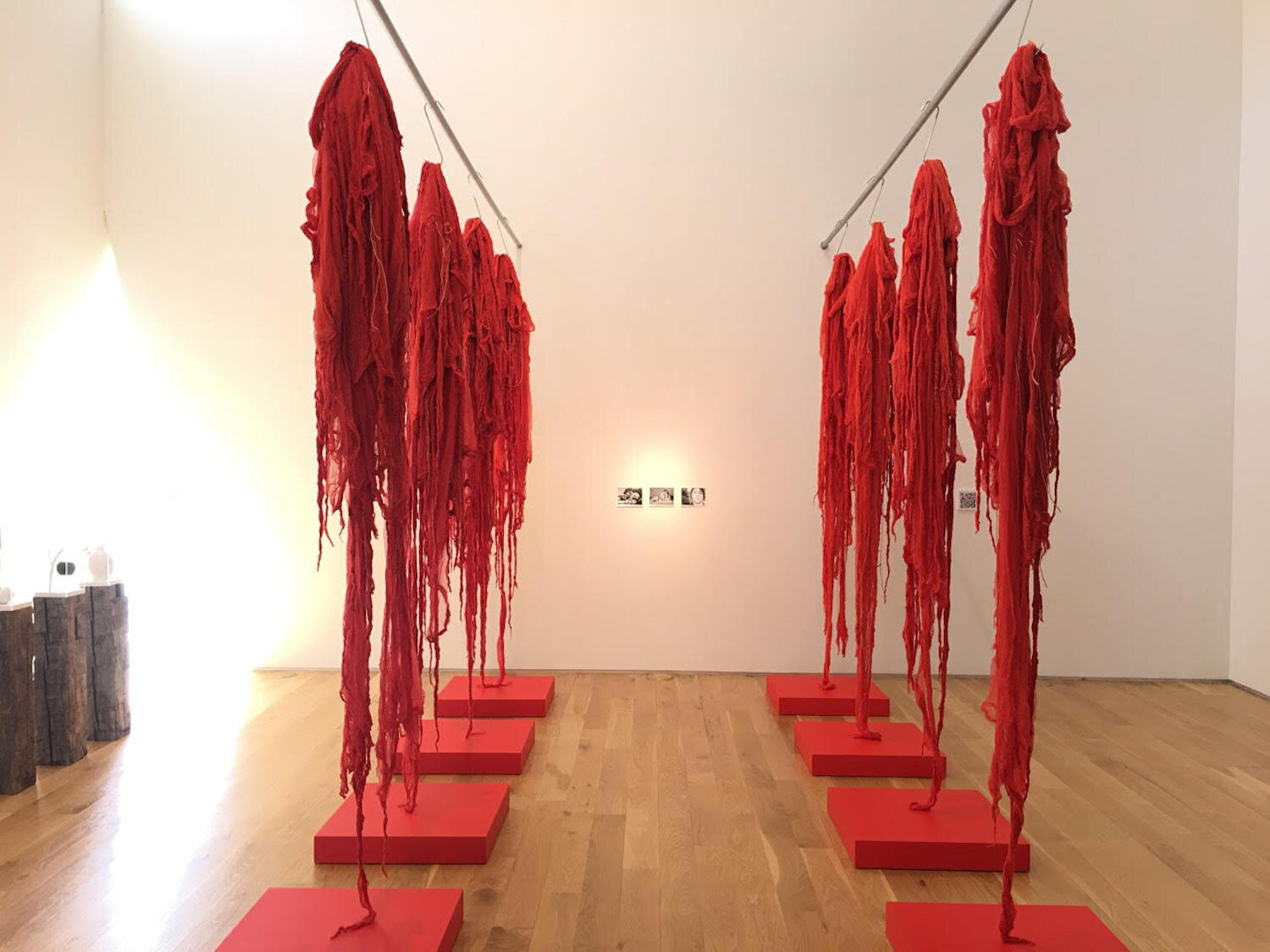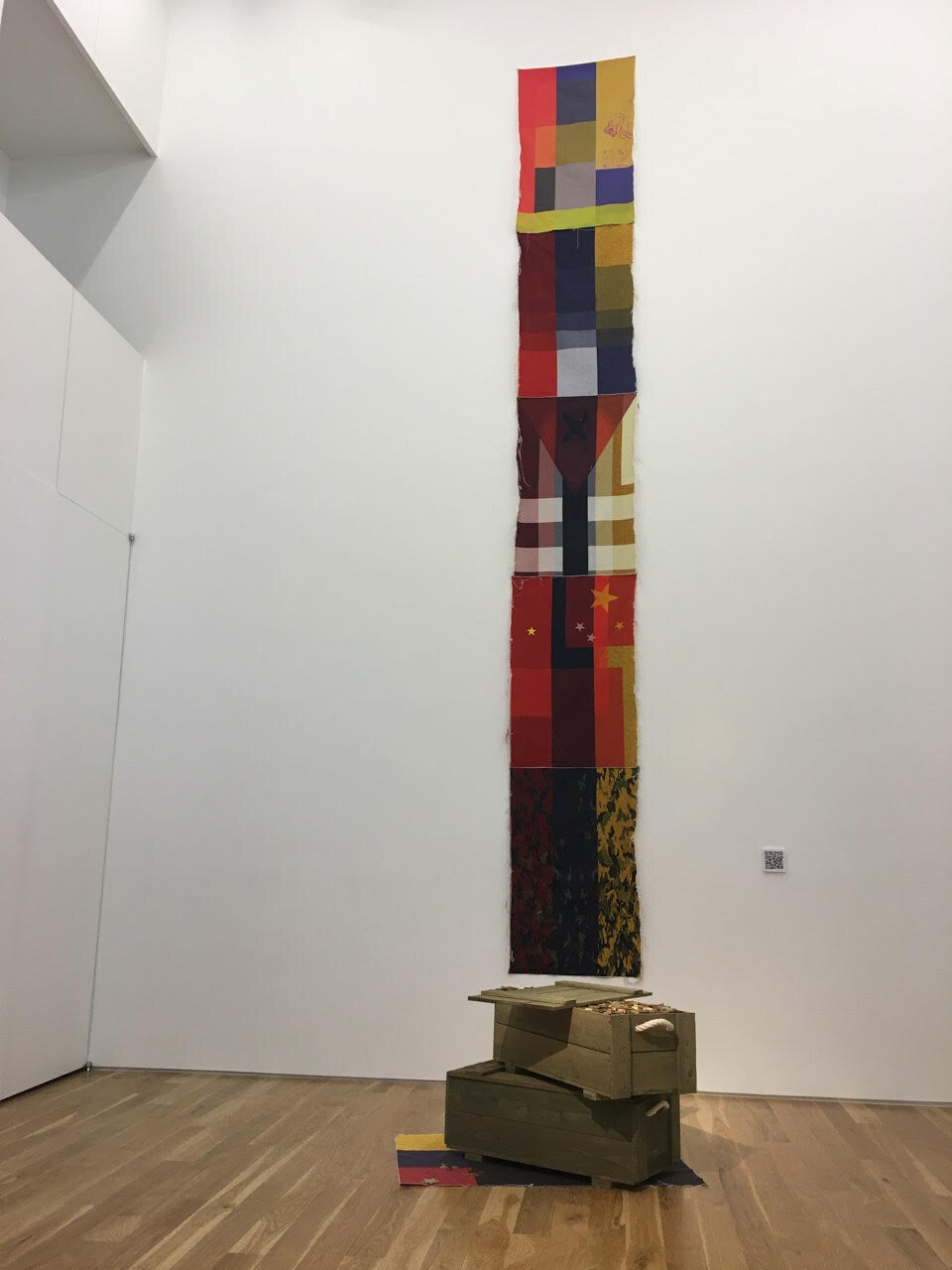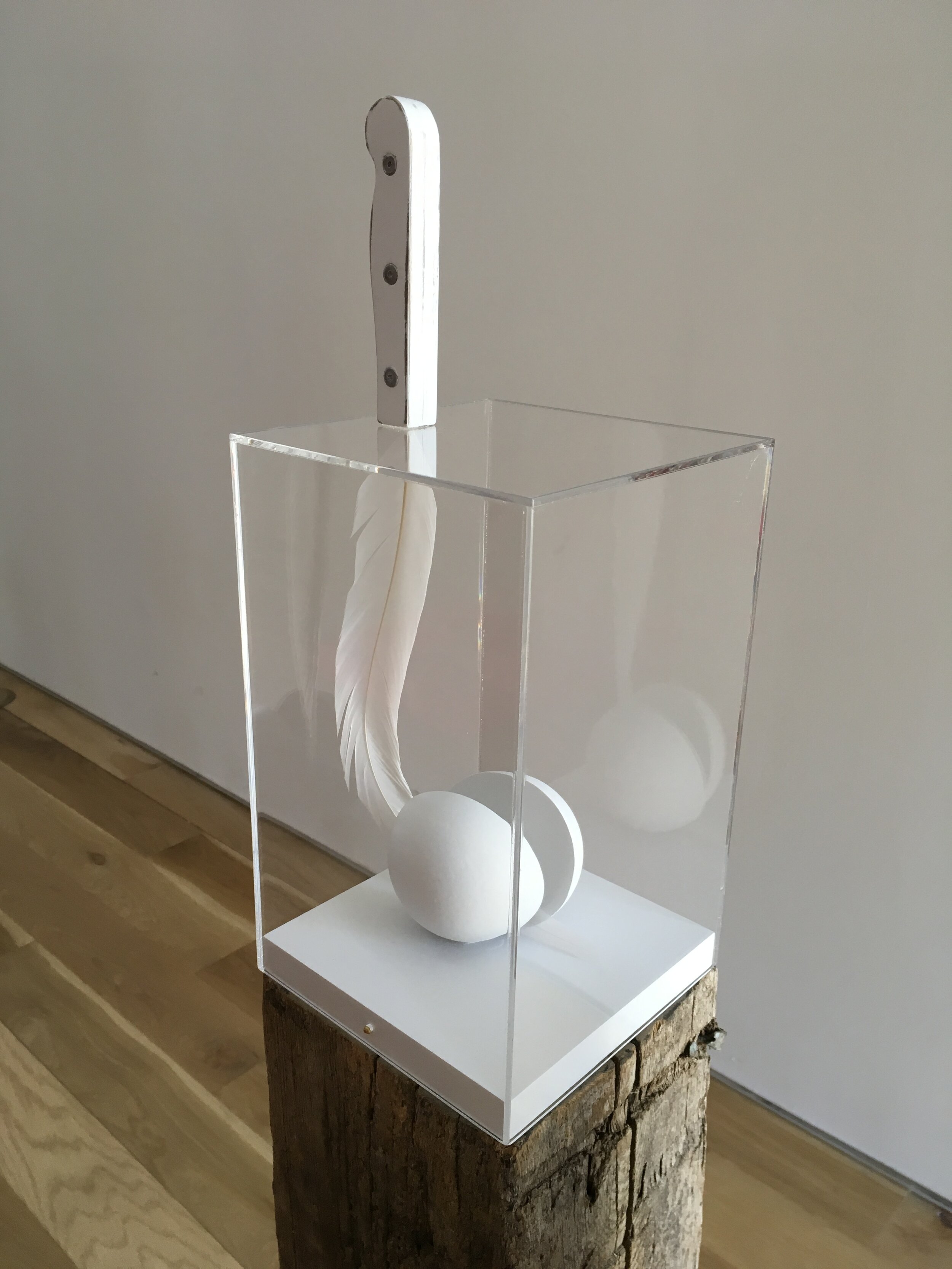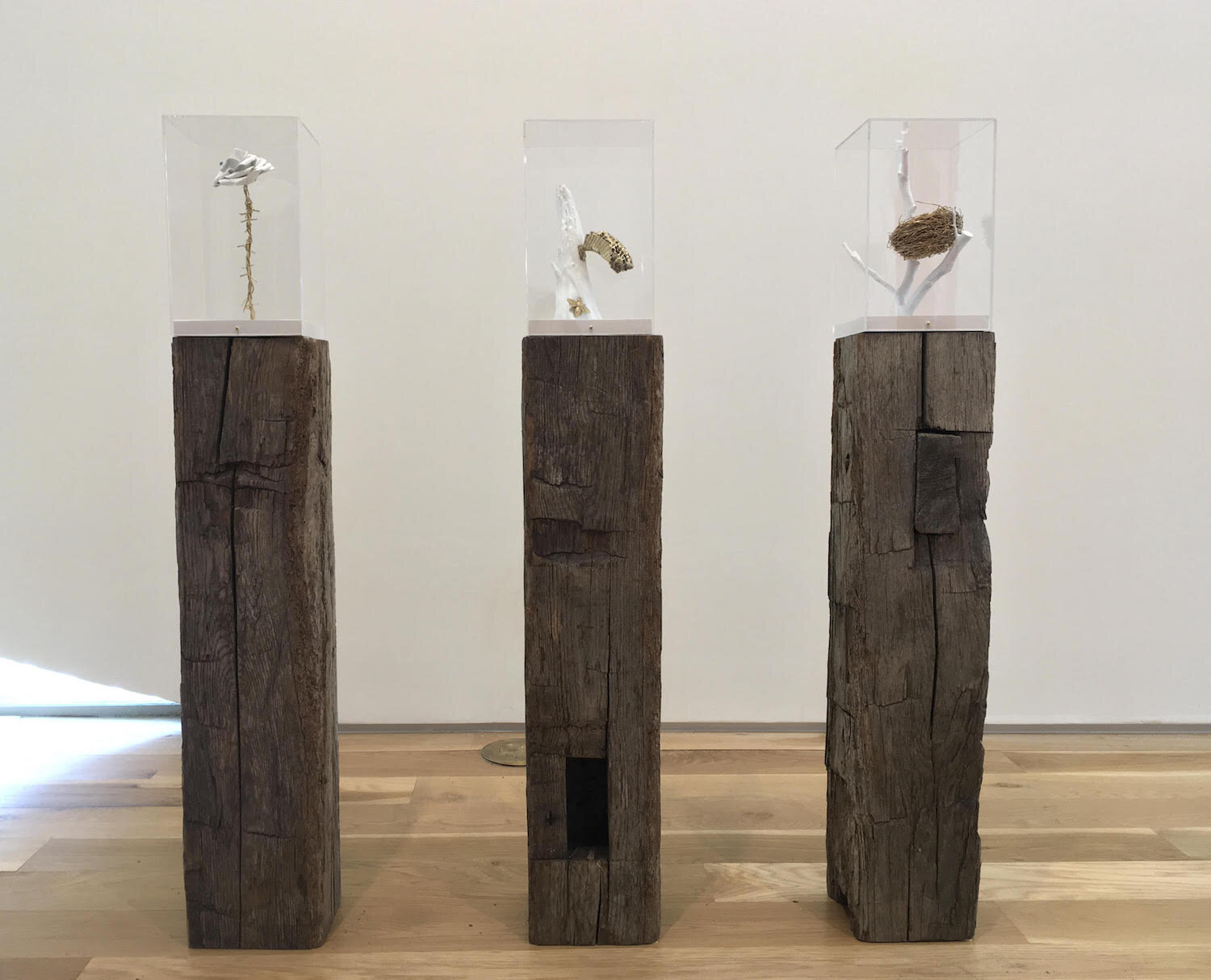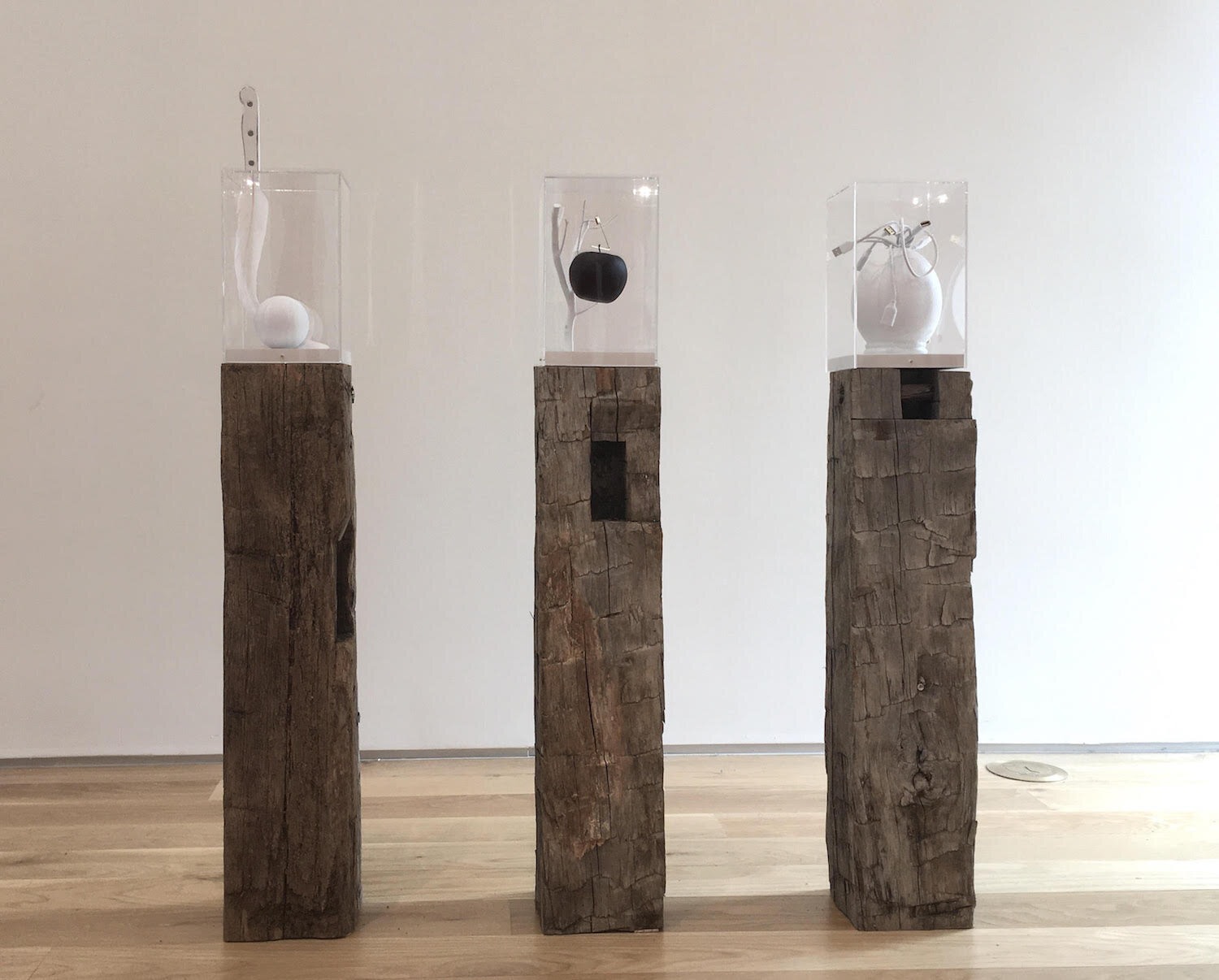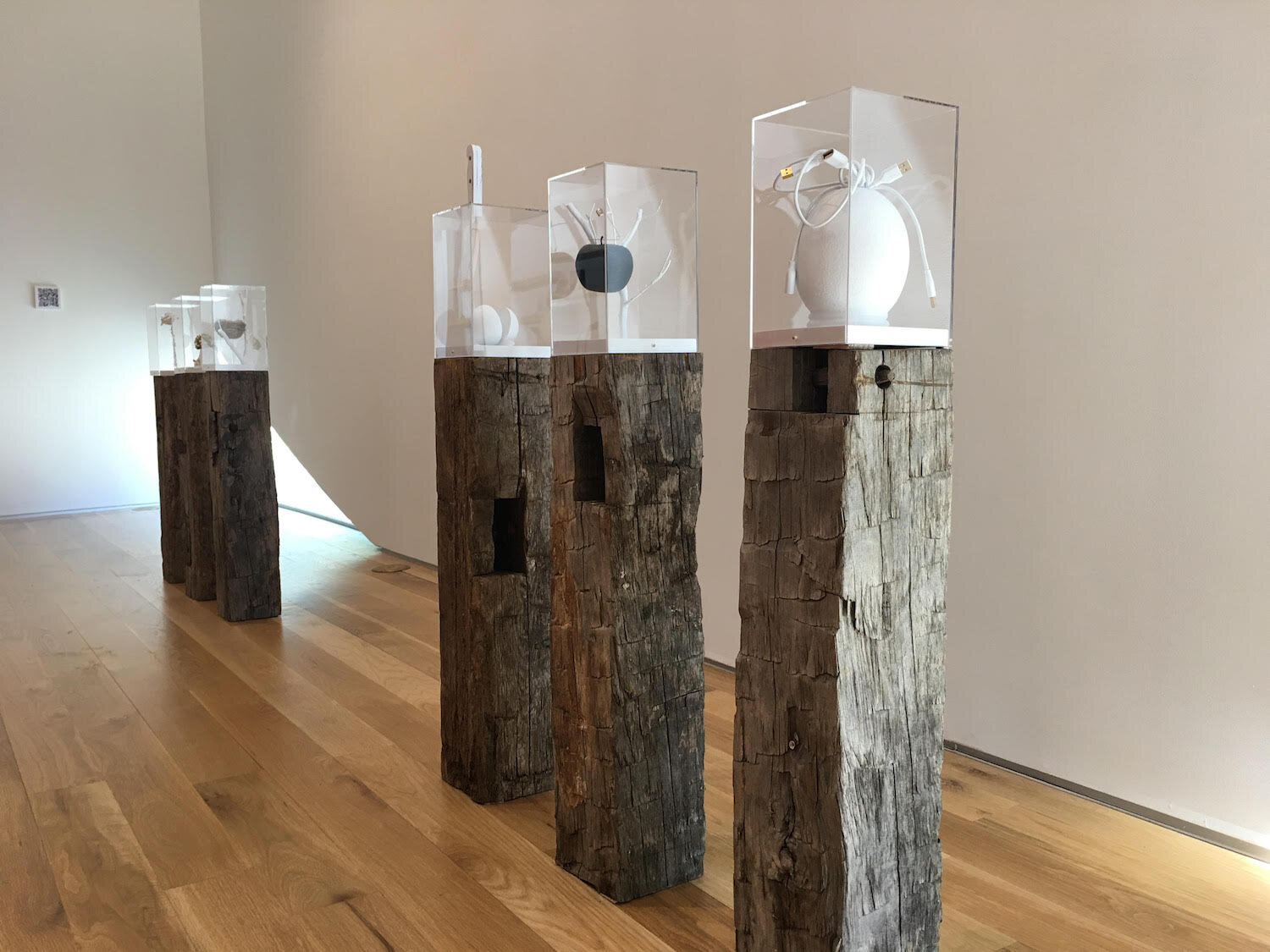Mery Godigna Collet
INTERFERENCE: Recent Works
October 13 - November 8, 2019
ABOUT MARY GODIGNA COLLET’S INTERFERENCE
Surpik angelini
september 2019
Early on, heralding the spirit of our anthropocene era, Mery Godigna Collet’s art embodied a profound attentiveness to our undeniable responsibility as humans to repudiate, deflect, remediate destructive political, economic and ecological actions endangering all living – organic and inorganic – matter sustaining life in our planet. As boundless a task as it may seem, Godigna Collet has addressed these issues as she witnessed them in her own life. In the 90’s her work focused on the massive conflagration of Kuwait’s oil wells, causing over 20 years of involvement in the Gulf and Iraq war; the worst environmental and human disasters in our time.
In the present exhibition, Godigna Collet installs a poignant series of intervened flags, their colors representing the hosts of invading nations, while their fallen stars are placed in ammunition boxes on the floor, signaling loss of independence, wellbeing and national identity. More importantly, this work unmasks the ongoing and perversely hidden neo colonial exploitation and total depletion of material and human resources in developing countries, by world powers. In fact, the catastrophic aftereffects of their surreptitious interferences underlie massive human extinction and a refugee crisis all over the world.
Carnage is perhaps Godigna Collet’s most literal and conspicuous statement, as she lines up blood colored gauze strips, hanging with meat hooks from high wires. Here, she confronts us with our homegrown epidemic of massive killings in schools, public places, and working environments. Three images of victims face us on the wall, underscored by the name of the specific weapon used to kill each one.
Surrounding this loud denouncement against violence, a more quiet, and no less impactful installation of smaller “mise-en-scènes” are presented like precious objects protected by plexiglass boxes. Here we contemplate seven dissonant situations caused by human interference in nature, a bee next to a wasp nest, an ostrich egg hatching charging digital cables, a rose’s thorns turned into prongs of barbed wire…
Expressively spanning from direct representation to poetic evocation, Mery Godigna Collet’s art is anchored in her compassionate probing of collective suffering, beyond partisanship, national identity or personal interest. Hers is a voice to be reckoned with.
Biography
Mery Godigna Collet
Born in Caracas, Venezuela, in 1959. Since the beginning of her career, Godigna Collet explores the coexistence between humans and environment through social and political issues. Her art work is supported by the versatile use of diverse materials, applied in installations, paintings, sculptures, photography and video, challenging the viewer through the use of new techniques and unconventional materials in the making of her art.
Godigna Collet’s artistic proposal is based on four research projects involving ways to concepts into matter. Her work is based in promoting a conscious use of natural resources and technology.
Mery Godigna Collet has participated in 34 solo and 40 group exhibitions in Venezuela, Colombia, Mexico, Spain, Italy, France, Germany, the Netherlands, Belgium, New York, Miami, New Mexico and Texas.
Her works are at the collections of the Museum of Contemporary Art of Zulia (MACZUL) in Venezuela, the Galleria D’Arte Moderno Aroldo Bonzagni di Cento (Italy), the Latin American Art Museum, Mexic-Arte Museum in Austin TX, B98 Museum of Marfa, TX, Benson Collection in Austin TX and Petroleum Museum in TX.
She has exhibited at the Art Gallery of Siderúrgica del Orinoco, the Museum of Discurso de Angostura in Ciudad Bolivar, Venezuela, the Centro Rómulo Gallegos of Latin American Studies (CELARG) and the Museum of Contemporary Art in Caracas, Venezuela. Monument “la Rocca” in Cento, Italy, the Museum Pallazo Estense, the Centre D’Art Puyguerin-Vayolles, Monts sur Guesnes, France, the Mexican American Cultural Center in Austin, TX, the University of Texas in Austin, LHUCA in Lubbock TX, the Museum of the Americas in Miami, USA, and the Museo Archeologico di Belriguardo in Voghiera, Italy , as well as permanent and temporary public art works in Venezuela, Texas and Italy.
